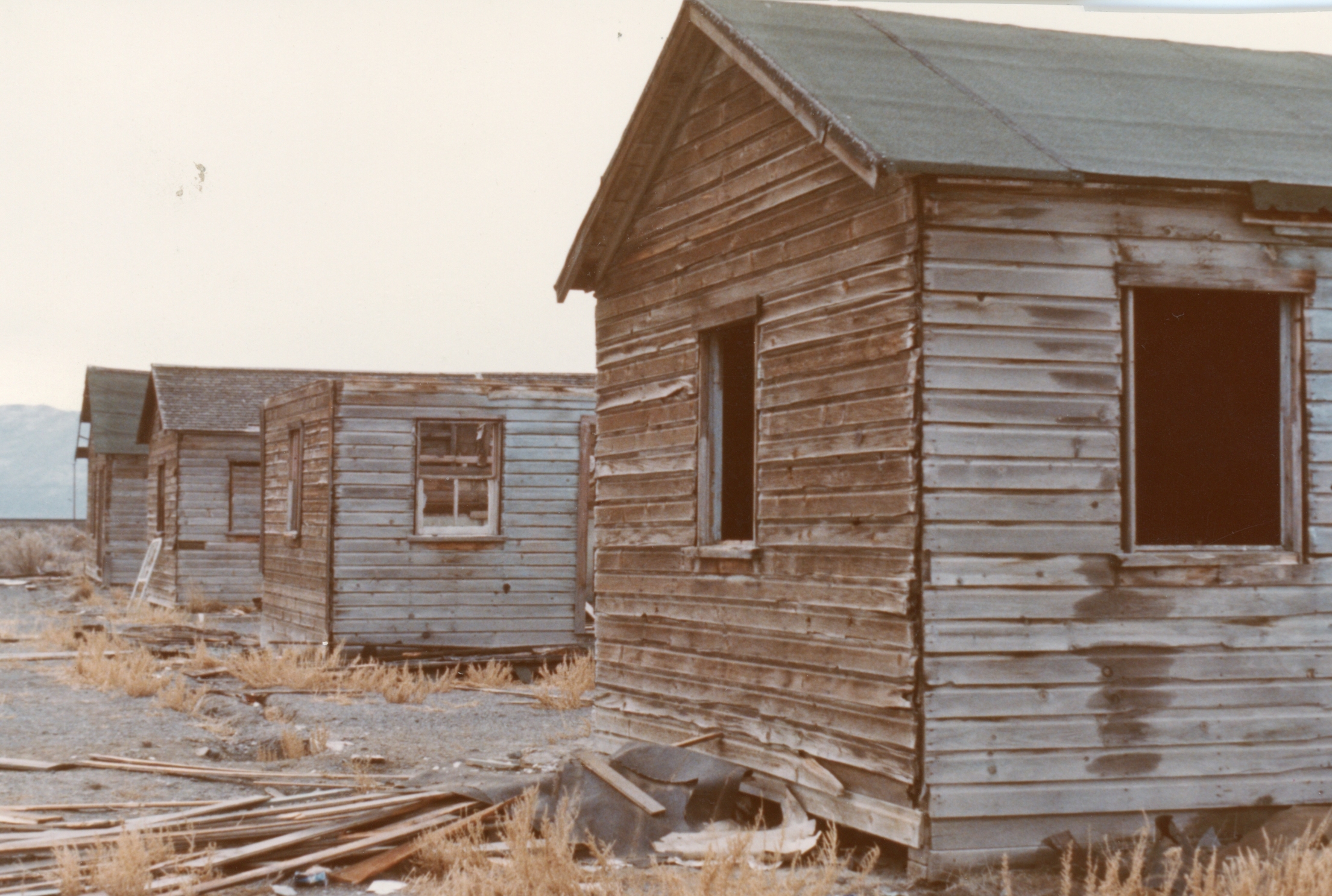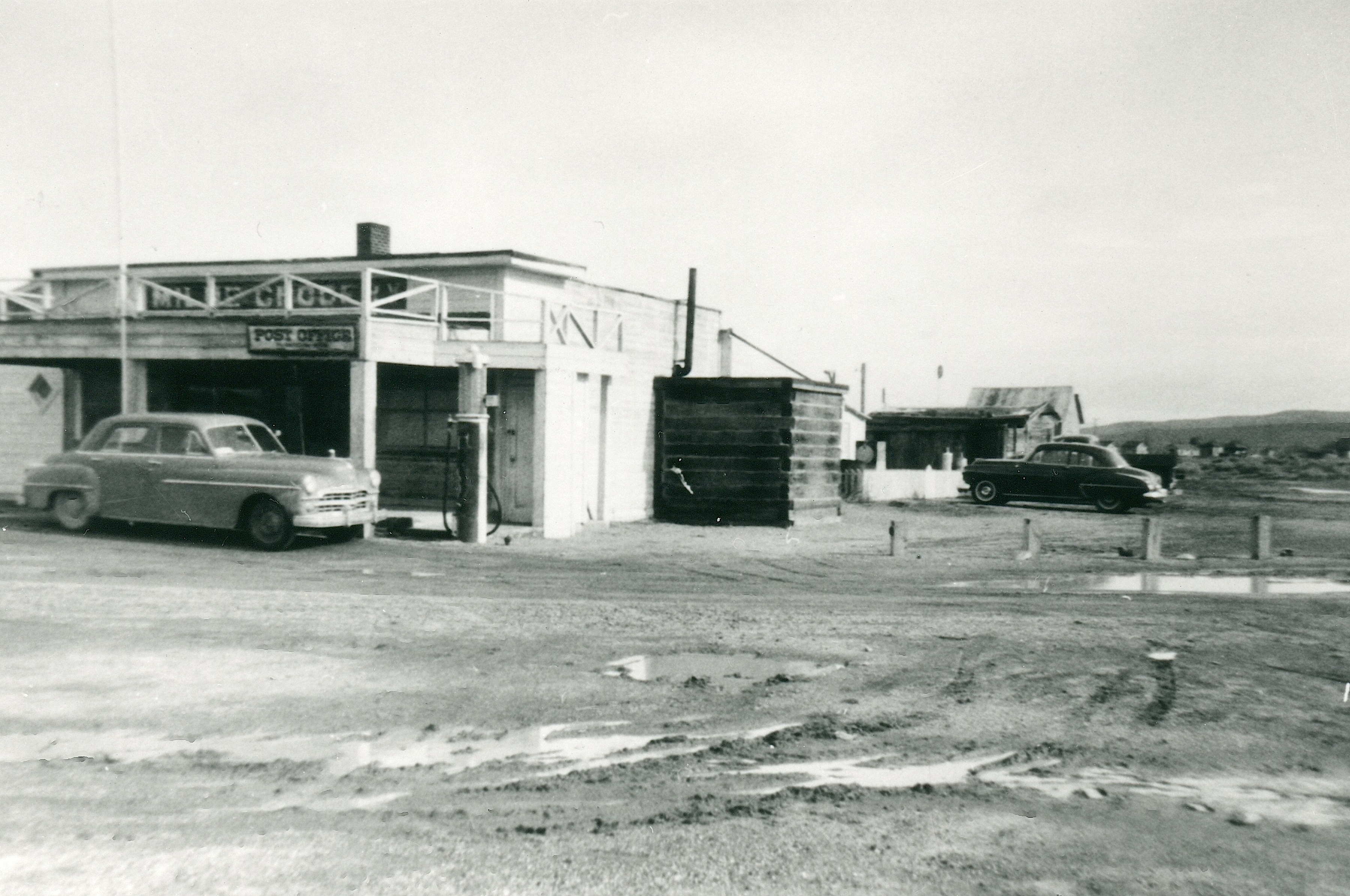
Many years ago, I wrote a weekly historical column for the Lassen County Times. At that time, I contacted Eric Moody, who was researching Flanigan, and I asked him to write an article. He obliged and here it is.
Flanigan was to be the most important community in eastern and southern Honey Lake Valley, a major rail center, situated in the midst of a rich agricultural area, boasting hundreds, perhaps thousands of inhabitants.
At least that was the grandiose dream of Flanigan’s founders. In reality, the small town located five miles inside Nevada at the intersection of the Southern Pacific and Western Pacific tracks never boasted a population more than fifty and never became a center for much of anything.
The place did exist, though, for seventy years, 1909 to 1969, and its history isn’t as lacking in interest as its meager population would seem to indicate.
Flanigan first appeared in late 1909, when the Western Pacific Railroad built its main line through eastern Honey Lake Valley. By January of 1910 a Western Pacific station was in operation there. The station disappeared the next year, but in 1912-1913 the Southern Pacific built a branch line from Fernley, Nevada to Susanville and Westwood, and the new line passed that of the Western Pacific at Flanigan. Southern Pacific buildings were set up late in 1912, and the next year a station established.
With this, the time seemed ripe for promotion of the site. Two Oakland speculators, C.A. Ross and George Warnken, had a townsite laid out on land they owned just west of the Flanigan railroad intersection. Their projected community, taking the same name as the station, was to have thirty blocks with 900 lots, a school and a library.
Promotion of the new town began, with the principal “pitchman” being Paul Butler, a one-armed dynamo who had been hired by Ross and Warnken to be their agent at Flanigan. Scores of curious visitors were ushered around eastern Honey Lake Valley, and over 200 town lots were sold. By 1914 Flanigan boasted a post office, a general store, and a spacious forty room hotel—built and operated by Paul Butler, who confidently predicted that Flanigan was going to become a major rail center—another Roseville, or at least another Sparks.

Unfortunately, Flanigan didn’t develop much more. Butler continued his promotional work into the mid-1920’s—even trying to drill for oil and developing a bog lime, or marl, deposit nearby, but even he finally gave up. In 1924 he sold his store to Orlando Gasperoni, then a Southern Pacific section foreman at Flanigan, and in 1926 the practically unused hotel was sold for its lumber and torn down.
Flanigan went on living, but its existence was quiet and relatively uneventful. There were some further attempts to drill for oil or gas and the marl deposit continued to be worked. The Bonham School (formerly located at the Bonham Ranch) opened its doors at Flanigan in 1929, and dances, which drew people from all over the area, were held in the school building. In 1934 Orlando Gasperoni sold the store to William and Gertrude Milne, who had come to Flanigan four years earlier when she had been hired to teach school.

It was not until the late 1950s that things at Flanigan really began to change—for the worse. In 1959 the Southern Pacific pulled out its section crews, and shortly after that the Western Pacific did the same. In 1961 the post office shut down. It had been located in the store, which had closed its doors in the middle 1950s.
Flanigan remained alive only because of the school, where a commuting teacher taught a handful of students, and Mrs. Milne’s continued residence at her home which was attached to the closed store.
The year 1969 saw the end of Flanigan. Early on the morning of January 2, while Mrs. Milne was away visiting at the Fish Springs Ranch, the store with her attached home, burned to the ground. And that summer the school, the last one-room school in Washoe County, was closed because of a lack of students. Mrs. Milne moved to Sutcliffe over at Pyramid Lake.
Today, there is not much to Flanigan to tell visitors that it was once the “coming city”, the projected metropolis of eastern Honey Lake Valley.
Support
And now in 2024, Flanigan has about 50 residents around here. We live quiet secluded lives. There really is nothing left of the town.
Wonderfully peaceful
This area has a mystical allure
When I purchased property in 2017,
I made it out to Paiute lane to find two people within
5 mile range
It was epic solitude, felt like being on a different planet
It’s dirt, sagebrush, and the ghosts of pyramid lake to keep you company
Of course, there’s the train, which rolls by frequently
Sure, there’s no water. No anything really. Just you ,
Free, it’s 23 miles of dirt washboard road from pyramid lake,
I highly recommend visiting flanigan, especially spend the night
It’s amazing, imagine a virgin skyline of Reno without
All the mucky muck, so serene and vast,
I’m out on Paiute lane, come on by and say hi😀
Ps I know John Gardner , haha met him the other night after I surprised him with a bonfire my brother Zac and I enjoyed on a Saturday night
Cheers